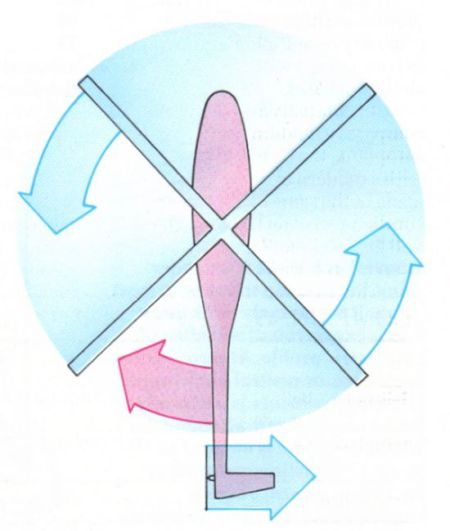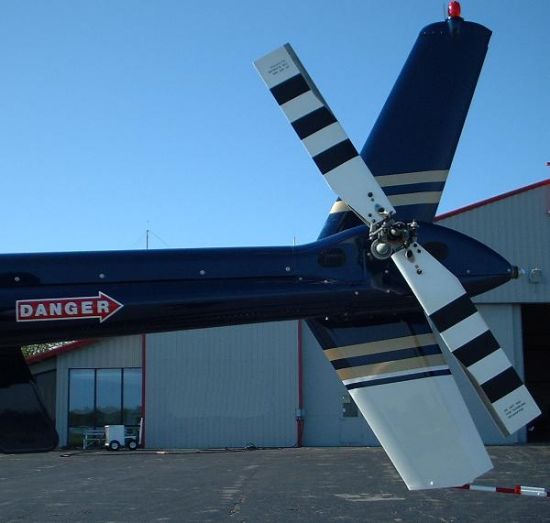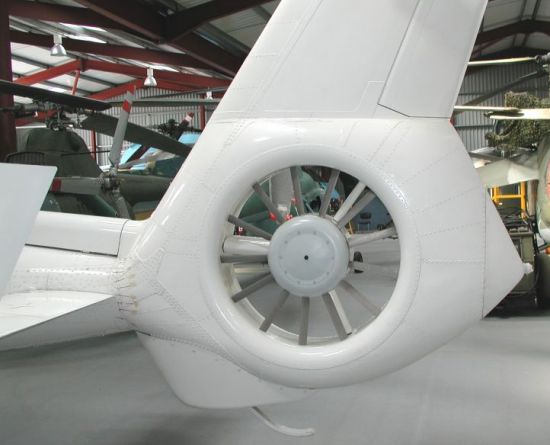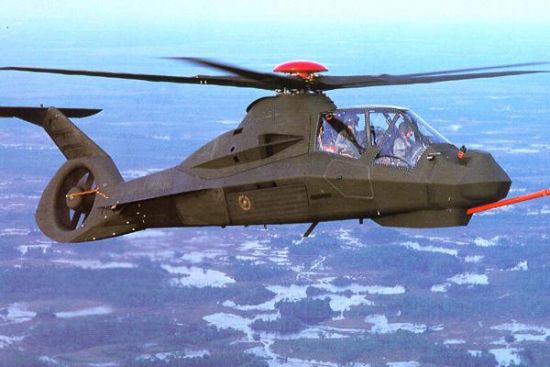|
||||||||||
|
|
||||||||||
|
||||||||||
|
|
||||||||||

Most helicopters use a device called a tail rotor to prevent this problem. The purpose of a conventional tail rotor, located at the end of the tail boom aft of the fuselage, is to generate a thrust force in the direction of the straight blue arrow. This sideways force counteracts the spinning tendency of the fuselage to keep it pointed forward. Most conventional tail rotors, like that of the Bell 407 shown below, have two to five blades whose tips are exposed to the external air.

NOTAR, short for NO TAil Rotor, is a more unusual torque control system that does away with the tail rotor completely. Instead, the system makes use of compressed air that is forced out of slots inside the tail boom. This jet of air changes the direction of the air flow in the vicinity of the tail boom to create an aerodynamic force that opposes the spinning torque motion. NOTAR is one of the latest methods devised to counteract the torque effect, but it is only used by MD Helicopters in the United States.

The Fenestron tail rotor is another relatively new technique that was patented by the French firm Aérospatiale, now part of Eurocopter. The Fenestron, pictured below, is essentially the same concept as a conventional tail rotor. Both systems feature spinning blades that generate a thrust force to cancel out the tendency of a helicopter fuselage to rotate.

However, the Fenestron rotor differs from a conventional rotor by adding several more blades. Whereas a conventional tail rotor seldom has more than four blades, a typical Fenestron includes eight to thirteen blades. Compared to conventional tail rotor blades, the Fenestron blades are also much smaller and spin at higher speeds. Furthermore, these blades are mounted within a shroud that forms part of the vertical tail fin of the helicopter. This configuration turns the rotor into a ducted fan whose blade tips are protected from the external air.

The primary advantage of this ducted fan arrangement is to reduce the turbulence and vortex shedding that occurs on rotor and propeller blades. In so doing, the rotor becomes more aerodynamically efficient by reducing drag, and noise as well as vibration are also significantly reduced. The Fenestron offers safety advantages too since the shroud helps protect the rotor from striking outside objects. Tail rotor strikes against trees, power lines, and other obstructions are one of the most common causes of helicopter crashes, so reducing the rotor's vulnerability to damage is important. The shroud also reduces the danger tail rotors have traditionally posed to ground crew operating near helicopters during takeoff and landing.

The only significant drawback to ducted fans like the Fenestron is that the shroud adds weight that offsets at
least some of the improvements in performance. Regardless of the weight penalty, noise reduction was one of the
primary reasons a ducted fan system was adopted for the now-cancelled RAH-66 Comanche stealth helicopter pictured
above. Since the majority of the noise generated by a helicopter tends to come from the tail rotor, designers
adopted a ducted fan to reduce noise levels and make the helicopter more difficult to detect. This rotor system
was essentially a copy of the French Fenestron yet was referred to by the name Fantail in the US.
- answer by Jeff Scott, 23 January 2005
Related Topics:
Read More Articles:


|
Aircraft | Design | Ask Us | Shop | Search |

|
|
| About Us | Contact Us | Copyright © 1997- | |||
|
|
|||